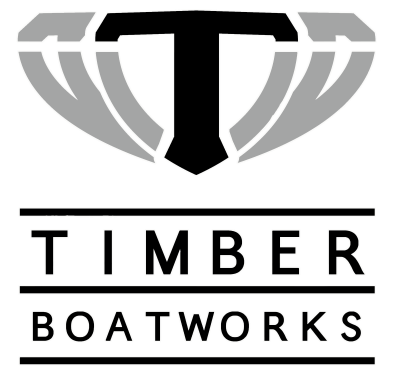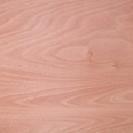Why Build with Wood?
Most boat builders will agree that when it comes to crafting a beautiful, yet functional boat, there's nothing quite like wood. Distinctive in appearance and satisfying to work with, wood is the traditional boat building material. Hardwoods can be used for structure (Ash, Oak, Mahogany), rot resistant woods are used for hull construction (cedar, palomino, marine plywood), and stringers, ribs, floors and decks often use plywoods.
Using wood to construct a watercraft is often misunderstood, or looked at through the lens of general carpentry, however most marine plywoods are significantly lighter than home grade woods, with more strength, more laminations, rot resistant glues and independently tested to be certified marine plywood. The reason for this higher standard is that weight and strength are factors in the performance, buoyancy, stiffness, span and humid environment of boats. If a boat is too heavy or flimsy it will not perform to its design, and therefore is not sufficient for marine construction.
Our boat kits are constructed with British Standard 1088 Okume Marine Mahogany plywood which has satisfied the most strict standards and testing to receive its 1088 stamp. This includes WBP (water and boil proof) resin on the entire surface of every veneer. Any plywood that is up to 8mm thick must contain more than 3 lamination and two veneers. There is no fill or knots allowed on the top and bottom veneer. The core veneer shall be at right angles to the adjacent plies (other than even numbers of laminations where the core veneer must both run in the same direction), this is called biaxial or bi-directional lamination. This means the plywood has strength in the direction of the long and short edge, unlike home grade plywood that has a strength direction along the long edge only. The moisture content of the plywood is 6-14% tested by the producer before it leaves the factory, leaving no potential for weather checking or core delamination. The above mentionned list is only the major notes of the BS 1088 certification that our plywood requires, however, the full list of what it is to be British Standard 1088 will be attached on the product at the end of this page for reference.
From a economical standpoint, wood remains the most cost efficient engineering material. Lightweight, yet stiff, it gives a boat greater potential for performance and stability. It is an excellent insulator against condensation and sound and its resistance to fatigue provides lasting power against accumulated damage. It is also very easy to repair and replace, with materials being available and safety and training protocols not required to work with the product. This makes it more readily available for builders and hobbyists and not only professional applications.
Because wood is a renewable resource, even the most expensive types of wood are more reasonably priced than competing materials (COOSA, composite board, honeycomb board, SMC, Epoxy Board, Carbonfibre Sheets, etc.). For very high performing and ultra light constructions are the composite materials are required and beneficial (sailGP, Olympics, speed world records, military application, etc.) For most water sport and recreational boating, wood is still the ideal material.
When working with wood, we only require common tools and basic skill and knowledge. Wood tools can be easily purchased, and methods of construction are not limited, unlike composite materials and metals. Builders can repair their craft without high costs of purchasing specific tools and manufacturing processes (ovens, molds, infusion materials, vacuum materials) to repair their craft. Most of all, wood adds a feeling of life, warmth and craftsmanship that cannot be matched by manmade materials.
There are so many great reasons for building your own boat or restoring that lovely old wood hull: the sense of accomplishment, the tradition, and the substantial cost savings, and availability, just to name a few. When you choose a wooden boat, it will truly be an expression of creativity, a source of pride and a lasting pleasure for years to come.
Problems of the past
As a boat building material, wood also has some well-known disadvantages which have now been overcome.
Because dry wood is much lighter and stiffer than wet wood, these desirable physical properties are diminished once wood becomes water-saturated. If a high moisture content is coupled with the presence of oxygen and warm temperatures, wood becomes subject to dry rot. The solution to resolve rot and humidity control is epoxy coating and sealing the material.
Low grade plywood also have the risk of internal delamination. This can be caused by weather checking, which generally happens in drastic temperature changes, free standing water or repetitive or heavy impact damage. To resolve this fibreglass cloths and other composite materials (foam, kevlar, sealants, stringers, etc.) are used to reinforce specific areas on the craft. Our boat kits are fibreglassed inside and outside with ribs and bulkheads for support.
The use of mechanical fasteners can also create problems. Because the effectiveness of load distribution is limited, stress concentration can collapse the surrounding wood and ultimately cause fasteners to become loose. To resolve this we can use adhesives, such as epoxy or urethanes to bond at a higher strength than the fasteners alone, and resolve vibration and stress concentration.
By combining marine plywood and epoxy, we can have long lasting and durable boats with minimal maintenance, low cost and rapid build time.




$0.00$99.00 - $278.00
Selected Okoume throughout plywood meeting the British Standard, BS 1088:2018 with the Lloyd's Register Type Approved certificate, Marine Ply is widely recognized by professionals in boat construction: racing or recreational boats, manufacture of kits for kayaks, canoes and wooden boats. It is light and has an excellent moisture resistance (gluing class 3) which follows the particular requirements for shipbuilding. It can also be found in the interior fittings for cabins due to its many finishing possibilities. It can be used in structures, e.g. for the production of hulls often associated with fibreglass and epoxy resin. It is the preferred panel for shipwrights all over the world, from New Zealand to the Baltic ports.

